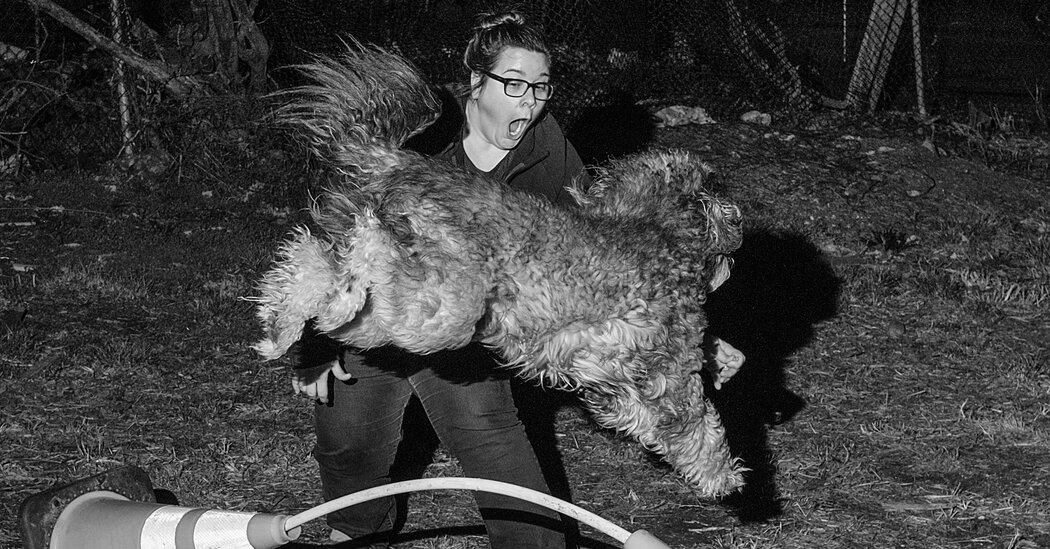On a quiet street in the Kensington neighborhood of Philadelphia, just a few steps from my back door, is a vacant lot that my wife, Anne, and I share with our neighbors. This patch of dirty ground was once three single-family homes. Bit by bit, rains have washed away the soil, revealing corners of the buildings’ foundations and the occasional broken brick and shard of glass.
Anne and I moved into our house in 2013. The neighbors on our street were extremely welcoming. At the time, the block was filled with very good people living among a very bad drug problem. It was obvious that the addiction epidemic brought everyone together, as the sense of community responsibility was palpable. One of the first things our new neighbors asked us was which car was ours — so they could keep an eye out in case someone tried to break into it.
In our collection of welcome materials was a yellow sticky note: “Welcome to the hood, we’re hanging in the big backyard if you want to come out.”
At risk of being reductive, the story of Kensington is not unlike that of many other turn-of-the-century industrial hubs: Industry moves out, many people follow, drugs move in. Over the following years, houses and mills collapse or burn, leaving behind vacant lot after vacant lot. Among them was ours, a space that was once a dumpsite littered with spare tires, heroin needles and what was only explained by the old heads as “a sex trailer.”
It wasn’t until 2012 or early 2013 when our neighbors Zach and Sawyer cleaned up the lot and started squatting on it — they even got the Pennsylvania Horticultural Society to come through and plant some trees and erect a small red fence. It was our own personal dirtbag Narnia.
We began meeting back there for morning coffee. The dogs would run and roughhouse, ensuring they’d be exhausted by the time we all left for work. After work, dog play happy hours would extend late into the evening. We would sit around a fire and talk for hours about this and that — local news, crime, complaints. In true Philly form, we spoke with passion. To an outsider, it probably looked like we were arguing.
We burned anything we could get our hands on — mostly old wood and cardboard scavenged from dumpsters and a nearby building demolition. But one winter, when our boiler died, we got drunk and had a bonfire to keep warm while waiting for the new one to be installed. Things got out of hand, and we ended up burning almost half of our outdoor furniture.
A portion of the lot was dedicated to our garden, which featured, among other things, 15-foot fig trees. The ground in our neighborhood had long since been poisoned from the mills, tanneries and factories that had been there before, so everything had to be grown in raised beds. Melons, squash and beans snaked up a homemade trellis fashioned from an old bunk bed we found in the trash. On summer evenings, after hours of wrestling around the gardens, the dogs would fall asleep in the grass smelling like caprese salads.
The lot hosted a made-up and extremely short-lived tournament dubbed the Kensington Danger Games, featuring events like How Close How Long, in which we saw who could keep their hand closest to the fire for the longest amount of time; Ladder Dash, in which we raced one another across the rungs of a horizontal elevated ladder; and Taser Tag, which is exactly what it sounds like. The tournament was abandoned just before the jousting event, which was to be conducted on broken bicycles with two-by-fours.
Over the years, an endless supply of stray cats have passed through. Between the broken gazebo and abandoned compost bins, at least two cats have birthed entire families. We’ve had raccoons and opossums and squirrels. Their chosen trail is safely above the dogs, tightrope-walking the defunct phone line like it’s their own personal super highway — occasionally dropping hoagie rolls, pretzels, Tastykakes, chicken wings and other gifts from the sky.
During the early days of the pandemic, we used it to have small, socially distant outdoor gatherings.
In recent years, many neighbors have moved away for better opportunities: Jobs. School. A new spot closer to work. Others have left to grow their families. From that fence over the last 10 years, we’ve watched the neighborhood gentrify. Somehow, Kensington continues to look younger and newer, while on our side of the fence we’ve all gotten older and more tired. Ain’t none of us staying up past 11 p.m. anymore.
Anne and I are the last ones of the original crew now. As I look over the lot from our bathroom window, all the surrounding lots are in some stage of metamorphosis — into gigantic multifamily buildings. They’ve been closing in on the lot bit by bit as the years pass.
This past winter may have been our last bonfire season. We say that every year, but this year really feels like the one.
Jordan Baumgarten is a photographer based in Philadelphia. His photographs from a vacant lot behind his home are collected in the forthcoming book “The Group for Mutual Improvement.”
The Times is committed to publishing a diversity of letters to the editor. We’d like to hear what you think about this or any of our articles. Here are some tips. And here’s our email: letters@nytimes.com.
Follow the New York Times Opinion section on Facebook, Instagram, TikTok, WhatsApp, X and Threads.


